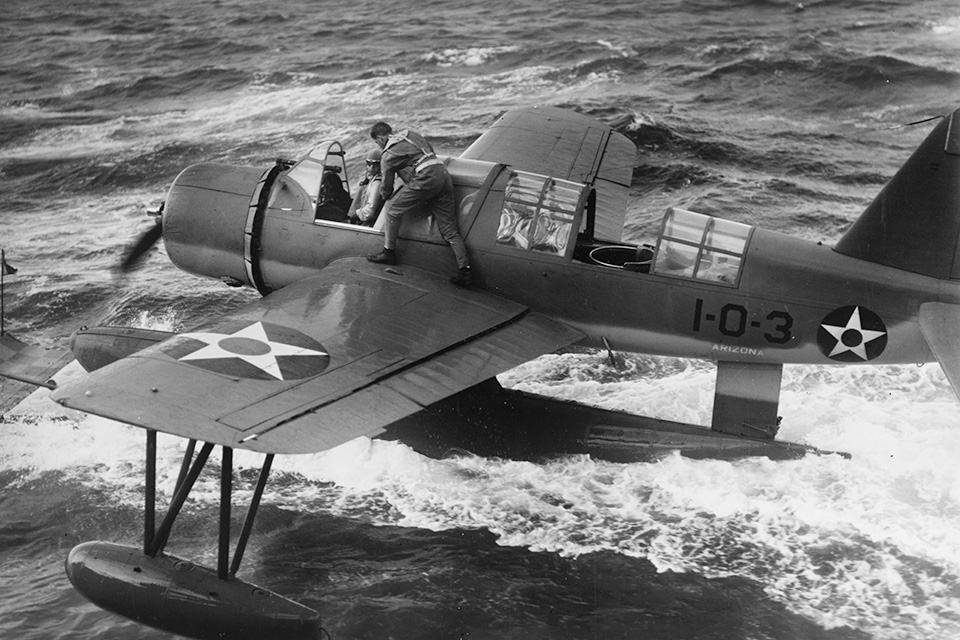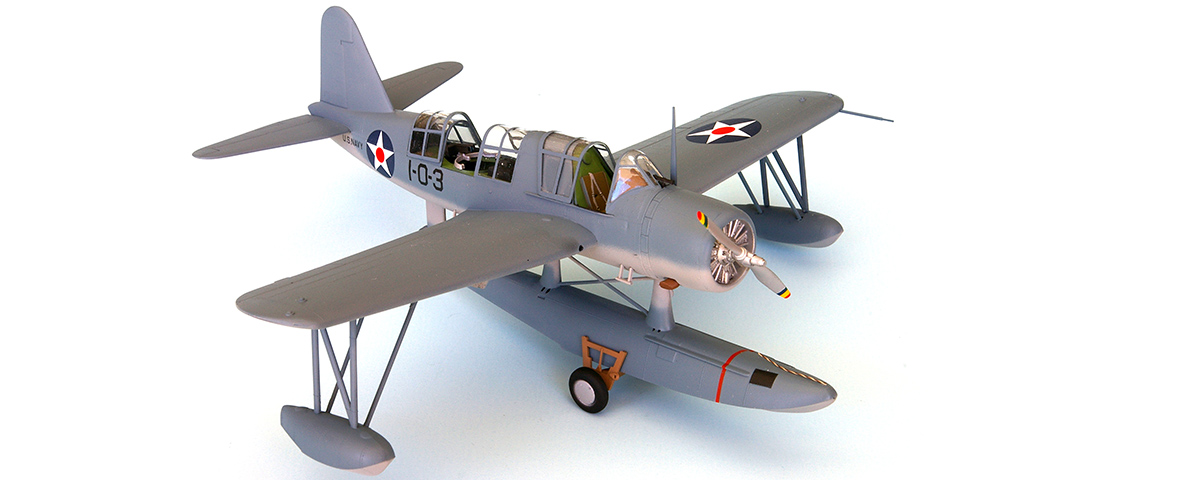Until recently, about the only place to find a Vought OS2U Kingfisher model was at model club swap meets. Then Revell USA reissued its Monogram Models 1/48th-scale kit of the floatplane (#6907), which is simple and inexpensive, with few parts. By closely following the instructions, you can create your own realistic model. Note, however, that this kit was engineered nearly a half-century ago. The fit of several parts is not precise, and many seams will require filling and sanding.
Construction begins with painting the cockpit and gunner/radio operator’s compartment interior green, FS-34151. Since these areas are visible under the large greenhouse canopy, it’s important to pay attention to the details. The radio set should be painted aircraft interior black, FS-37031, with a silver directional loop. The pilot’s seat should be olive drab, FS-34087, and the instrument side consoles flat black. The belts for both crew members, molded on the seats, are off-white, with silver buckles. You’ll find the pilot’s instrument panel on the decal sheet. Clip it off, mount it on a backing of thin plastic sheet and glue it into place. Note this model’s interior is very basic. If you’re looking for more detail, consider a resin replacement cockpit set, produced by Lone Star Models.
While the interior is drying, glue the wing sections together. The cockpit and second crew member’s compartment should be glued into the starboard fuselage, making sure they line up. Carefully slip the assembled wings through the cutouts in the fuselage. Close the fuselage sides, checking to ensure the interior parts and wings line up perfectly. Identify the left and right horizontal stabilizers and cement them into place. These parts, which are tabbed, should interlock when correctly positioned. Then glue the fuselage main float sections together, making sure the joints are solid and there are no gaps. Next assemble the outboard wing sponsons, but don’t glue them into place under the wings until after painting is complete.

Kingfishers were primarily used as observation and search-and-rescue aircraft, catapult-launched from the aft decks of battleships and heavy cruisers. While researching the paint colors used in the floatplane shown here, I found a U.S. Navy photo of an OS2U about to be recovered by USS Arizona off the Hawaiian Islands in September 1941. The aircraft is shown with light gull gray, FS-36440, on the underside, with the topside painted intermediate blue, FS-35164. The prop should be painted silver, with red, yellow and blue stripes on the tips.
To prepare for decaling, spray an overall coat of gloss to provide a smooth surface for the markings. The aircraft in the photo carried prewar dark blue discs, with white stars and red center as national insignias on the top port and underside starboard wing and on either side of the rear fuselage. These can be found on Experts Choice decal sheet #48-44. The Kingfisher’s black side codes, 1-O-3, came from Yellow Wings decal #48-119. I took the small white lettering for Arizona, displayed under the gunner’s compartment, from Super Scale decal #48-994.
Assemble the kit’s beaching gear frame and paint it “wood,” with black wheels. Once you’ve finished painting the main aircraft, attach the outboard sponsons. I discarded the kit’s sway braces and fabricated new ones from thin pieces of Evergreen plastic strips, sanded to an airfoil shape.
The final step in construction is painting the five-part greenhouse canopy. Though painting the many frames is tedious, you can simplify it by first masking and spraying all the vertical braces. When those are dry, mask and paint the horizontal parts. Dusting a mixture of 50-50 glosscoat and dullcoat over your model will give your Kingfisher a semi-matt finish and protect the decals.
For more information about the Kingfisher, read Workhorse of the Fleet, from the November 2011 issue of Aviation History.





